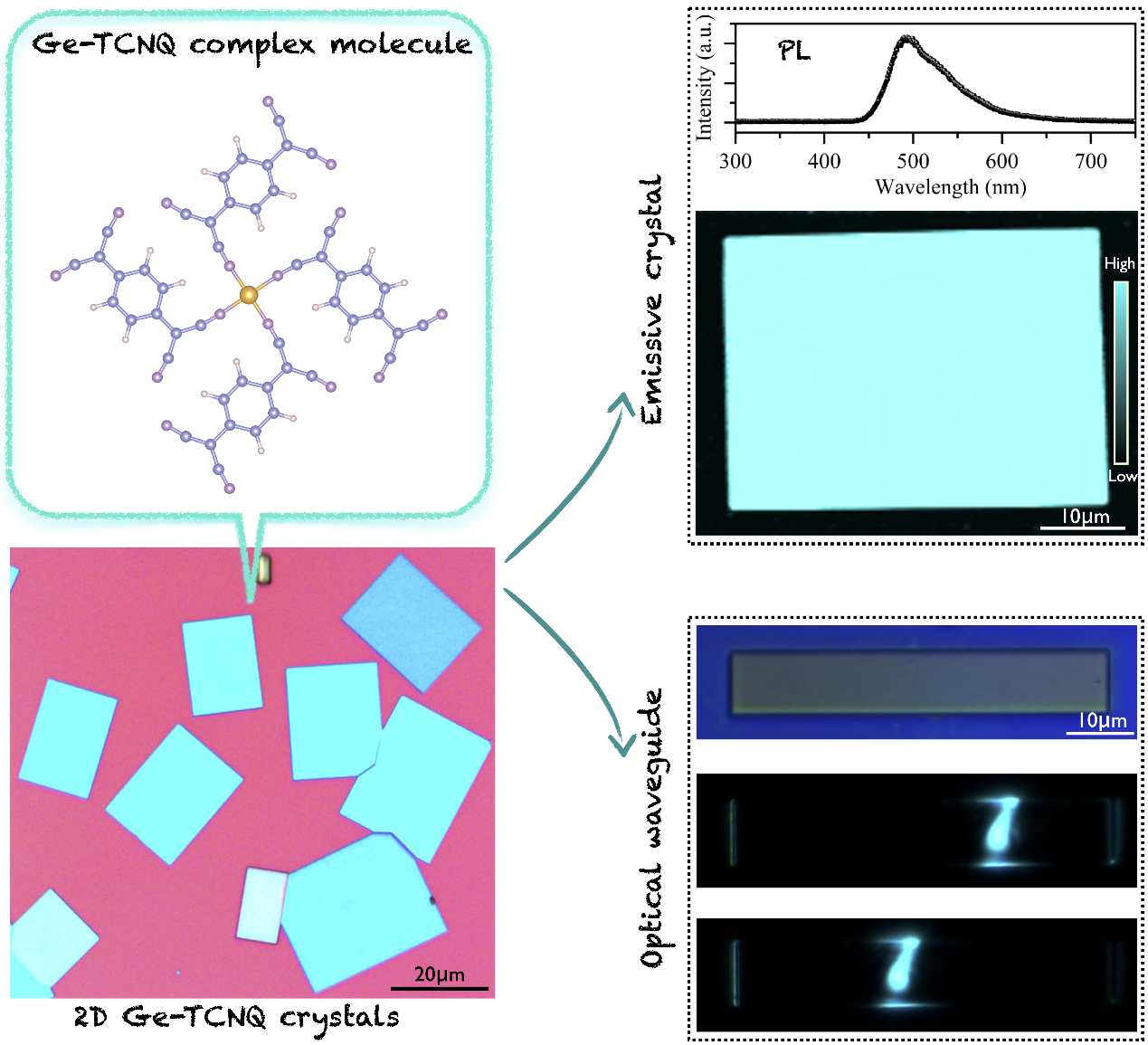Ke Pei, Shiyang Ji, Mei Zhao, Chunlei Li, Peng Luo, Lang Jiang, Yongsheng Zhao, Tianyou Zhai*, 2D Metal-Organic Complex Luminescent Crystals, Advanced Functional Materials 2021, 31, 2106160.
https://doi.org/10.1002/adfm.202106160.

Abstract: Two-dimensional (2D) emissive crystals have attracted tremendous research interests due to their outstanding compatibility with integrated planar photonic system, which ideally meet the requirement for versatile photonic device applications, such as lasers, light-emitting devices and optical waveguides. Among 2D emissive materials, metal-organic complex crystals are highly desirable because of their strong charge-transfer interactions and enhanced optical absorption that benefit superior luminescence efficiency. Here, the in-air sublimation method was adopted to synthesis 2D Ge-TCNQ microplate crystals (TCNQ, 7,7,8,8-tetracyanoquinodimethane) with thickness down to 13.4 nm. Such ultrathin Ge-TCNQ crystals exhibit an exciton binding energy of 40.7 meV and a decent photoluminescence (PL) quantum efficiency of 5.53%. The fitting slope of excitation power dependent PL intensity displays a transition from linear to superlinear characteristics that reveals both trap-assisted recombination and free carrier recombination are present in the luminescence process. The energy band structure of Ge-TCNQ is examined by ultraviolet photoelectron spectroscopy and UV-vis spectroscopy to elucidate the physical mechanism of photo excitation and fluorescence processes. The emissive Ge-TCNQ crystals were further employed as high-performance optical waveguides with a small optical loss coefficient of 0.078 dB μm-1. This work opens new avenues using 2D metal-organic complex crystals to develop advanced optoelectronic devices.